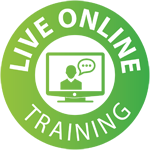The tool-chain required for the exercises are provided within a self-contained virtual machine. The student is only required to install the VirtualBox software on her/his Windows/Linux/Mac host machine. The remaining tools and exercises files are pre-configured and located inside the Virtual Machine to be run locally. The VM can be used for day do day embedded software development and allows the student to continue or redo his exercises even after the course has ended.
The exercises are designed to run on the provided NUCLEO STM32L552 board. This board is kept by the student at the end of the class.
The exercises cover a large spectrum of topics amongst those:
- Assembly programming
- Exception handling with the implementation priority schemes and pre-emption
- Mixing C and assembly to provide a semi-hosted solution
- Creating linker scripts
The security related hands-on exercises are:
- Part 1: Tool Flow
- Part 2: Security Attribution Unit Configuration
- Part 3: Configuring the non-secure world
- Part 4: Transition to the non-secure world
- Part 5: Using Arm cmse attributes for non-secure calls
- Part 6: Using Arm cmse attributes for secure calls
- Part 7: Identifying the source of a function call
- Part 8: Checking a data array address range
- Part 9: Accessing secure data from a non-secure application
- Part 10: Illegal access to a secure function from the non-secure word




